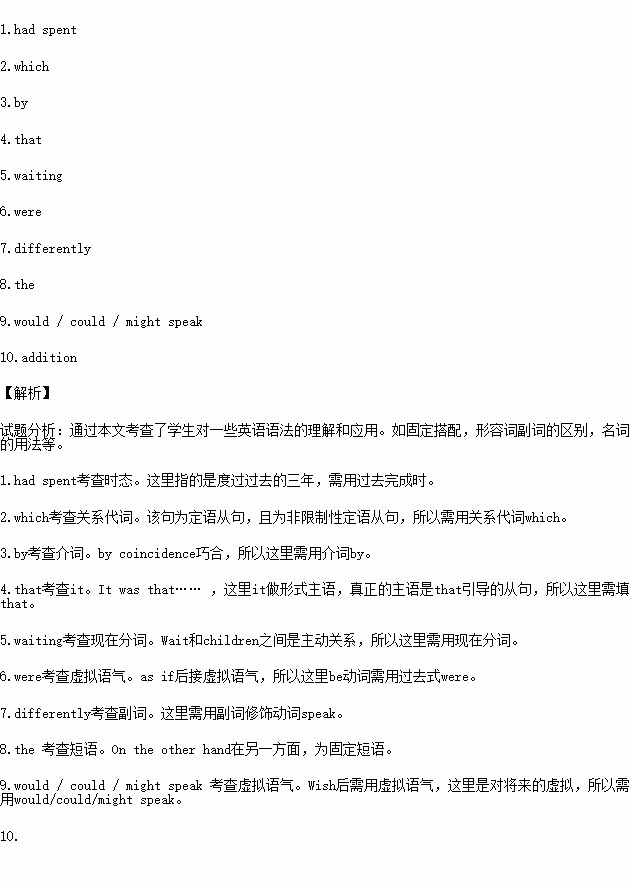题目内容
阅读下面材料,在空白处填入适当的内容(不多于3个单词)或括号内单词的正确形式。
It was a summer afternoon and some boys were playing together in a park. They knew each other well, as they _1.____ (spend) the last three years of school together and tomorrow was the start of a new term, about __2.______ they were excited and nervous.
The first day of school came, and all the boys from the park the day before were put in the same class ___3.____ coincidence. They jumped for joy all morning long. After lunch, the teacher came into the classroom with a boy and it was evident ___4.__ they had never seen him before.
All the children were quiet, ____5.___ (wait) for the teacher to speak. And she said: “Hello everyone, this is Mei Pei from China, our newest class member. Mei Pei knows some English so I hope you will treat him as if he __6.___ (be) your brother.”
Then one child said to Mei Pei: “How come you speak __7.__ (different)?” Meipei answered: “In my country, we all talk this way. On __8.____ other hand, we’re just the same as you. I wish I _9.___ (speak) English as well as you in three months.”
The children in the class understood this, and that it also didn’t matter what he looked like, or what colour his skin was, or that he didn’t speak perfect English.
So the new ___10.__ (add) to the class helped everyone learn how to respect new people. And the boys stayed in the same class for another two years, with Meipei as one of their best friends.
 学期复习一本通学习总动员期末加暑假延边人民出版社系列答案
学期复习一本通学习总动员期末加暑假延边人民出版社系列答案 芒果教辅暑假天地重庆出版社系列答案
芒果教辅暑假天地重庆出版社系列答案
